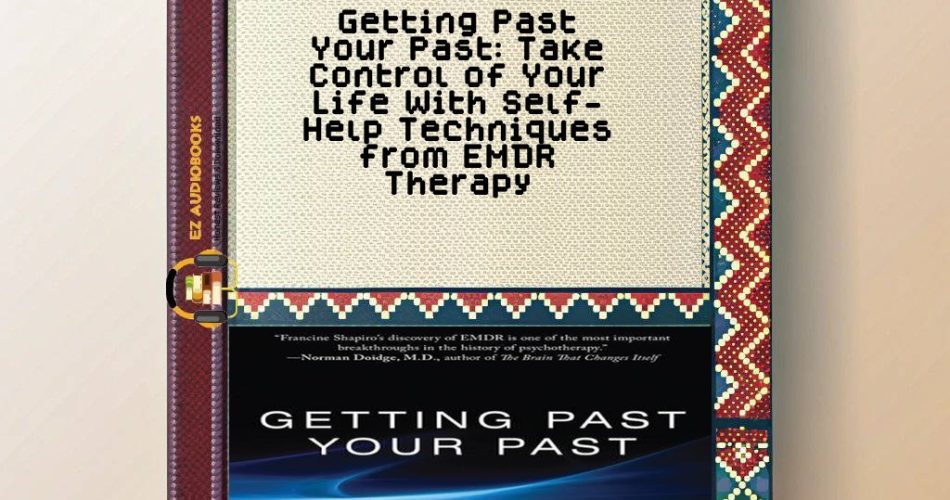Audiobook Sample
Listen to the sample to experience the story.
Please wait while we verify your browser...
- Title: Getting Past Your Past: Take Control of Your Life With Self-Help Techniques from EMDR Therapy
- Author: Francine Shapiro Ph.D.
- Narrator: Karen White
- Length: 12:05:00
- Version: Abridged
- Release Date: 14/05/2012
- Publisher: Tantor Media
- Genre: Non-Fiction, Psychology
- ISBN13: 9.78E+12
As someone who has spent decades analyzing narratives – both fictional and those we construct about ourselves – I approached Francine Shapiro’s “Getting Past Your Past” with equal parts professional curiosity and personal vulnerability. The audiobook experience, narrated with remarkable sensitivity by Karen White, becomes not just a listening exercise but what I can only describe as an act of neural rewiring. Shapiro’s pioneering EMDR therapy, which I first encountered during my research on trauma narratives in postwar Japanese literature, emerges here not as clinical jargon but as a profound tool for autobiographical reconstruction.
What fascinates me most is how Shapiro bridges the gap between scientific rigor and accessible self-help. Her explanation of how unprocessed memories create ‘stuck points’ in our psyche immediately transported me back to my Tokyo apartment, where I struggled to reconcile my American identity with the haunting beauty of Murakami’s trauma-laden protagonists. Shapiro’s concept of ‘adaptive information processing’ – that our brains can heal given the right conditions – echoes the reparative power I’ve observed in literature across cultures. The audiobook format proves particularly effective for her bilateral stimulation exercises; White’s measured pacing creates a rhythmic quality that mimics the eye movements of EMDR therapy itself.
Through a cultural lens, I appreciate how Shapiro dismantles the Western bias toward purely cognitive therapies. Her case studies – from the combat veteran to the performance-anxious musician – resonate with the cross-cultural narratives I teach at Berkeley. When describing how EMDR helped a client process childhood humiliation, I found myself recalling a student who once confessed how reading “The Bluest Eye” unlocked her own buried memories. Shapiro’s work provides the scientific framework for what literature has always done: allow us to safely revisit pain and emerge transformed.
Karen White’s narration deserves special scholarly attention. Her vocal modulation creates what Roland Barthes might call a ‘grain of the voice’ perfectly suited to therapeutic material – warm without being saccharine, authoritative without clinical detachment. Particularly impressive is her handling of the book’s interactive elements; during the ‘Butterfly Hug’ exercise, her pacing guides listeners through the physical motions with audio cues that feel organic rather than didactic. This audiobook demonstrates how vocal performance can become therapeutic when the narrator understands the material’s emotional weight.
The book’s second half, focusing on applying EMDR principles to daily life, reminds me of teaching “Mrs. Dalloway” and discussing how Woolf’s stream-of-consciousness technique mirrors our own mental patterns. Shapiro’s ‘Future Template’ exercise functions like literary foreshadowing for one’s life – a concept my literature students find revelatory. Her Olympic athlete examples particularly shine in audio format, with White’s dynamic delivery making the high-stakes scenarios viscerally immediate.
Some limitations emerge. Shapiro’s occasional oversimplification of complex neuroscience recalls the challenges I face when distilling literary theory for undergraduates. The chapter on ‘Changing the Channel’ on negative emotions, while practical, lacks the nuance of Buddhist mindfulness texts I’ve studied. Yet these are minor quibbles in an otherwise masterful work that makes cutting-edge therapy accessible.
Compared to other psychology audiobooks like “The Body Keeps the Score” (which I often assign), Shapiro’s work offers more immediate practical tools. Where Bessel van der Kolk explores trauma’s neurobiology in depth, Shapiro provides the user manual. The contrast with Mark Manson’s “The Subtle Art” is striking – while both advocate radical self-honesty, Shapiro supplies the actual methodology where Manson offers philosophy.
For listeners, I recommend approaching this as both a scholarly text and personal workbook. Keep a journal handy, as I did – many insights will prompt self-reflection. The audiobook’s structure allows for natural pausing after exercises, making it ideal for commuters seeking transformative listening. Those familiar with my work know I champion literature’s healing power; Shapiro gives us the science to harness that power intentionally.
In scholarly solidarity and shared humanity,
Prof. Emily Chen

